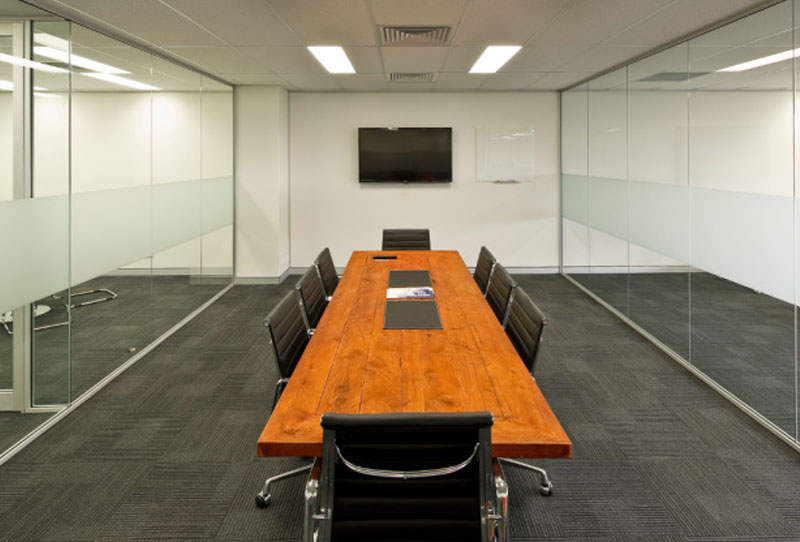
As your company grows or for other reasons, you may decide to leave your current office space. If your fitout went beyond the basic office set up and instead you have specific needs like medical, food preparation, retail or other special requirements, the likelihood that you’ve installed specialty fixtures and other items is pretty high.
The majority of leases require you to return the space as close to its original condition as possible. This work is also known as “defit” and “make good”.
Here is a quick guide to help eliminate the frustrations associated with moving out of your leased space.
- Prepare Right From the Start
The best way to insure your move goes well in the future is to think about obtaining a dilapidation report from your landlord. This report is an account of the condition of your space before you sign the lease and before you begin the fitout. Typically, a landlord will do a walk through with you pointing out things like the current fixtures or lack thereof.
The condition of the walls, flooring and any previously installed appliances such as microwaves, refrigerators and such. The cleanliness of the space will also be noted if applicable. He or she will most likely have you sign an agreement that you have seen and agree to return the fitout space back to the original condition as stated.
You should also make your own notes and if you spot damages, non-working appliances etc bring them to your landlord’s attention immediately. Those issues should be added to the same document mentioned above. This is to protect yourself at the end of your lease so that you are not held responsible for damages that existed prior to your tenancy.
- A Picture is Worth a Thousand Words
If you notice preexisting damage, take a time stamped picture of the damage. Taking a simple video with your smart-phone is also a great idea. Make copies of each. Keep one set for yourself and give the other set to your landlord.
- Almost Everything is Negotiable
Depending on the nature of your business, your fitout may require special fixtures or sophisticated wiring for computer networks for example. Let’s use a recording studio as an example. This kind of business requires special sound proofing, flooring and custom built furniture to house mixing consoles. Sound proof glass booths have to be built and complex computer systems. The best strategy would be to negotiate with the landlord which items you will remove from your fitout when your lease term ends.
Try to negotiate maintenance obligations as well. Typically, you will want to have the landlord responsible for an structural damages like the roof, gutters and air conditioning repairs. Also include electricity and plumbing problems. Of course it would be best to have a professional inspect the integrity of the building you’re planning to lease for your fitout before you sign on the dotted line. Keep in mind that if you make major changes that are electrical in nature, you may have to foot the costs of ongoing maintenance.
- Understanding ‘make good clauses’ and Your Responsibility
It’s always a good idea to consult with a lawyer regarding the specifics of your lease terms. Most leases will require you to carry out a Defit of the leased space, or in other words to reinstate the space to the same condition it was when your lease began. This basically means you’ll be required to De-fit and pay for the Make Good work upon termination of the lease.
So it is really important to always keep this in mind when you’re building your fitout. Some improvements can be costly to remove later. In other cases, if the improvements raise the value of the space your landlord may be willing to allow certain changes to remain as is and pay you a fee to do so.
This could be things like lighting fixtures, flooring and other items that if removed would cause damages that did not exist when you signed your lease initially.
But again, those terms should be negotiated before you sign the lease. In the end, you must take care when you remove anything in the fitout that fulfills the original agreement and leaves that space clean, tidy and in as close to its original state as possible.
- Recoup Your Defit Costs
Another point to remember is to sit down and estimate how long it will take for you to recoup your fitout costs and the costs of a Defit and Make Good of the premises. Then make sure your lease term is long enough to cover your costs and make a profit as well.
- Hiring A Professional
It is advisable to contract a professional company that has the expertise in the Make Good and Defit work, instead of taking on the job yourself. It can be easy to overlook things you agreed to in your lease and that could end up costing you an arm and a leg.
Sit down with someone who specialises in Defit and Make Good and go over line by line, if necessary, of everything that must be done. Don’t assume the contractor will just “figure it out”. It’s important they are on the same page with you and especially your landlord’s expectations.


